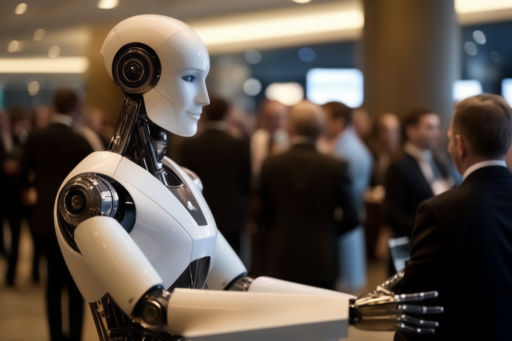This comprehensive instructional exercise gives an in-depth presentation to Artificial Intelligence (AI), covering its concepts, history, applications, and different subfields. It is planned to direct learners from fundamental to progressed levels, making a difference them get it AI and its suggestions in today’s innovation landscape.
- What is Artificial Insights (AI)?
Artificial Insights (AI) alludes to the department of computer science committed to making frameworks able of performing assignments that ordinarily require human insights. This incorporates errands such as learning, thinking, problem-solving, discernment, and dialect understanding.
Artificial: Alludes to man-made or synthetic.
Intelligence: Alludes to the capacity to think and make decisions.
Thus, AI can be characterized as:
“A department of computer science centered on making brilliantly machines that can perform assignments that more often than not require human insights, such as learning, thinking, and problem-solving.”
AI points to create frameworks that can work with human-like cognitive capacities, such as learning from involvement and making decisions.
- Why Learn Fake Intelligence?
Understanding AI offers a few benefits and opportunities:
Solving Real-World Issues: AI can address complex issues in regions like healthcare, showcasing, and activity administration with tall exactness and efficiency.
Creating Virtual Colleagues: Create individual colleagues like Siri, Google Partner, and Cortana.
Building Robots for Unsafe Situations: Make robots that can work in perilous conditions where human life might be at risk.
Driving Mechanical Advancement: AI clears the way for modern innovations and openings over different domains.
- Objectives of Counterfeit Intelligence
AI points to accomplish a few key objectives:
Replicate Human Insights: Make frameworks that imitate human cognitive functions.
Solve Knowledge-Intensive Errands: Perform complex assignments requiring critical information and expertise.
Integrate Recognition and Activity: Construct machines that can see their environment and take fitting actions.
Exhibit Brilliantly Behavior: Create frameworks able of learning, illustrating, clarifying, and exhorting on assignments such as hypothesis demonstrating, chess playing, surgical arranging, and independent driving.
- History of AI
AI’s advancement is stamped by a few noteworthy milestones:
Ancient Times: Greek myths and Egyptian building portrayed early concepts of cleverly machines.
19th and Early 20th Centuries: Advancements by Charles Babbage and Ada Lovelace in programmable machines.
1940s: John Von Neumann’s concept of put away programs; foundational work by Warren McCulloch and Walter Pitts on neural networks.
1950s: Alan Turing’s Turing Test and the Dartmouth Conference, where the term “Fake Insights” was coined.
1970s-1980s: Period of AI Winter due to restrictions in computing control and complexity.
1990s: Restoration of AI with headways in computing and information; IBM’s Profound Blue crushed Garry Kasparov in chess.
2000s: Rise of machine learning, common dialect preparing, and computer vision technologies.
2010s: Development of AI applications such as voice collaborators and self-driving cars; rise of generative AI models like GPT-3.
2020s: Proceeded progression with generative AI advances and their integration into different applications.
- Components of Counterfeit Intelligence
Creating AI frameworks includes numerous disciplines:
Mathematics: Fundamental for calculations and information analysis.
Biology: Experiences into neural forms and cognitive functions.
Psychology: Understanding human behavior and learning processes.
Sociology: Considering the affect of AI on society.
Computer Science: Center teach for creating calculations and programming.
Neuroscience: Ponder of brain work and neural networks.
Statistics: Imperative for information examination and show validation.
- Sorts of Fake Intelligence
AI can be categorized based on capabilities and functionality:
Based on Capabilities:
Weak AI (Contract AI): Specialized in performing a particular errand (e.g., Siri, IBM’s Watson).
General AI (Solid AI): Theoretical AI that performs any mental errand with human-like proficiency; not however realized.
Super AI: Hypothetical AI that outperforms human insights over all viewpoints; a future goal.
Based on Functionality:
Reactive Machines: Fundamental AI that reacts to current circumstances without memory (e.g., Profound Blue).
Limited Memory: AI that can utilize past information for decision-making (e.g., self-driving cars).
Theory of Intellect: AI pointing to get it human feelings and intelligent; still in development.
Self-Awareness: AI with awareness and self-awareness; a hypothetical concept.
- Preferences of Manufactured Intelligence
AI offers various benefits:
High Precision: Diminished blunders and expanded precision.
Speed: Fast decision-making and preparing capabilities.
Reliability: Reliable execution with negligible errors.
Risk Administration: Valuable in dangerous environments.
Digital Help: Improvements in virtual colleagues and client service.
Public Utility: Applications in self-driving cars, facial acknowledgment, and dialect processing.
Enhanced Security: Real-time danger discovery and response.
Aid in Inquire about: Quickens revelations and information analysis.
- Impediments of Fake Intelligence
Challenges related with AI include:
High Taken a toll: Costly equipment and program requirements.
Limited Imagination: AI needs human-like inventiveness and enthusiastic depth.
Dependency: Expanded dependence on machines may decrease human cognitive abilities.
Complexity: Creating and keeping up AI frameworks can be complex.
Job Relocation: Potential misfortune of employments due to automation.
Bias and Decency: Issues with decency and precision in AI systems.
- Challenges of AI
Addressing AI’s challenges involves:
Ethical Decision-Making: Guaranteeing AI frameworks make reasonable and moral choices.
Regulation: Creating fitting laws and regulations.
Bias: Moderating shamefulness in AI algorithms.
AI and Social Media: Guaranteeing exact and moral substance delivery.
Legal Issues: Clarifying risk and obligation in AI usage.
- AI Devices and Services
Recent progressions include:
Transformers: Advancements like GPTs and their applications in normal dialect processing.
Hardware Changes: Improved GPUs and cloud computing resources.
Pre-trained Models: Companies advertising ready-made AI models for different tasks.
Cloud-Based AI: Administrations from major cloud suppliers encouraging AI advancement and deployment.
- Prerequisites for Learning AI
Before plunging into AI, it is useful to have:
Programming Information: Recognition with dialects like Python, Java, or C++.
Mathematical Establishments: Understanding of calculus, likelihood, and measurements.




